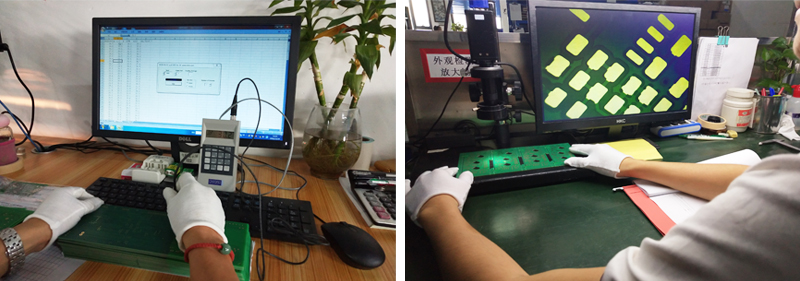When testing the PCB, you need to pay attention to some details. And in order to ensure the best product quality, please pay more attention to the following 9 common sense.

1. It is strictly forbidden to use the grounded test equipment to contact the TV, audio, video and other equipment on the baseboard to detect the PCB without the isolation transformer.
Although the general tape recorder has a power transformer, when it comes to a special TV, or especially a TV or audio equipment with a large output power or a poor understanding of the nature of the power supply used, it is first necessary to find out whether the chassis of the machine is charged or not. Otherwise, it will be very easy to short-circuit the power supply to the equipment with the baseboard, and the IC will be further affected.
2. When testing the PCB, please pay attention to the insulation properties of the soldering iron.
It is not allowed to use soldering iron for welding. If you need to confirm that the soldering iron is uncharged , it is best to ground the soldering iron's case. It should be noted that the MOS circuit is safer to use a low voltage circuit of 6 to 8V.
3. Before testing the PCB board, you need to understand the working principle of IC and its related circuits.
Before checking and repairing an integrated circuit, you must first familiarize yourself with the functions of the integrated circuit used, the internal circuits, the main electrical parameters, the function of each pin, and the normal voltage of the pin, the waveform and the working principle of the peripheral components.
4. When testing the PCB, please do not cause a short between the pins.
When testing waveforms with voltage measurements or oscilloscope probes, the test leads or probes should not be short-circuited between the pins of the IC due to slippage. It is best to measure on a peripheral printed circuit that is in direct communication with the pins. Any short circuit in any moment can easily damage the IC, and more care should be taken when testing flat-packaged CMOS integrated circuits.
5. When testing the PCB, the internal resistance of test instrument should be large.
When measuring the DC voltage of the integrated circuit pin, you should use a multimeter with an internal resistance greater than 20KΩ/V. Otherwise, there will be a large measurement error ofr some pin voltages.
6. When detecting the PCB, please pay attention to the heat dissipation of the power integrated circuit.
The power integrated circuit should have good dissipation, and it is not allowed to work under high power without a heat sink.
7. When testing the PCB, the leads should be reasonable.
If it is necessary to add external peripheral cells instead of the damaged parts inside the IC, small components should be used, and the wiring should be reasonable to avoid unnecessary parasitic coupling. In particular, it is necessary to handle the ground terminal between the audio power amplifier IC and the preamplifier circuit.
8. When testing the PCB, the quality of the weld should be ensured.
It is necessary to weld firmly when welding, otherwise the accumulation of soldering tin and the pores are likely to cause cold solder joints. The soldering time is generally not exceeding 3 seconds, and the power of the soldering iron is applied to the internal heat type about 25W. The soldered integrated circuit should be carefully observe. It is best to use an ohmmeter to test the short circuit between the pins and confirm that there is no solder adhesion and then switch on the power.
9. When testing the PCB, please do not easily determine the damage of the integrated circuit.
Do not easily determine the IC is damaged. Because most of integrated circuits are directly coupled, once a circuit is abnormal, it may cause multiple voltage changes, and these changes are not necessarily caused by integrated circuit damage. Moreover, in some cases, when measuring the voltage of each pin is consistent with or close to the normal value, it may not be sufficient to indicate that the integrated circuit is good. Because some soft fault do not cause a change in the DC voltage.